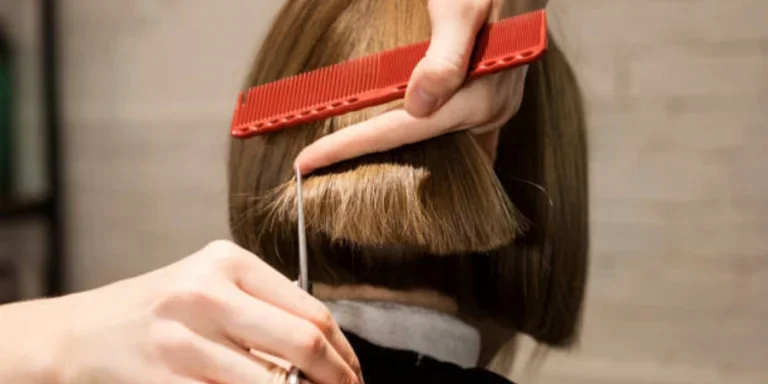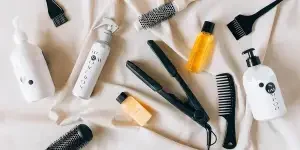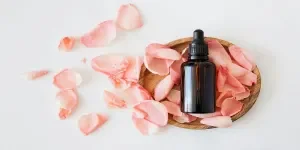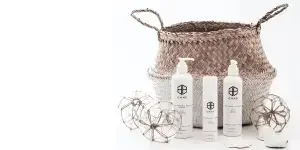The asymmetrical bob has evolved from a daring statement to a versatile must-have style. This modern cut, characterized by intentionally uneven lengths, offers a perfect blend of elegance and edge that works for virtually every face shape and lifestyle. Whether you’re looking to make a bold change or subtly refresh your look, this comprehensive guide will walk you through everything you need to know about getting and maintaining an asymmetrical bob in 2025, from choosing the right variation to mastering daily styling.
Table of Contents
1. Art of asymmetry: Why this cut turns heads
2. Face-first approach: Finding your perfect angle
3. Getting the cut: What to know beforehand
4. Daily styling secrets: Pro techniques revealed
5. Lasting impression: Smart upkeep strategies
Art of asymmetry: Why this cut turns heads

The asymmetrical bob’s enduring appeal lies in its ability to create visual interest through intentional imbalance. Unlike traditional bobs that maintain the same length throughout, this modern interpretation features one side longer than the other, typically varying from subtle differences to dramatic contrasts. According to StyleCraze, this deliberate asymmetry can transform ordinary cuts into statement-making styles that frame the face in uniquely flattering ways.
What makes this cut particularly versatile is its adaptability to different hair textures and face shapes. The longer side can be adjusted to soften angular features or create the illusion of length in rounder faces, while the shorter side adds structure and definition. Hair Adviser notes that whether your hair is straight, wavy, or curly, the asymmetrical design works with your natural texture to create movement and dimension that traditional symmetric cuts simply can’t achieve.
The 2025 interpretation of this style has evolved to include various elements like textured layers, undercuts, and creative color placement. Professional stylists are now incorporating subtle graduation techniques and precision cutting methods to ensure the asymmetry flows naturally, rather than appearing stark or disconnected. This modern approach allows for easier styling at home while maintaining the cut’s distinctive edge, making it an increasingly popular choice for those seeking a low-maintenance yet sophisticated look.
Face-first approach: Finding your perfect angle

Understanding your face shape is crucial when choosing an asymmetrical bob variation. Oval faces can carry virtually any asymmetrical style, from subtle to dramatic differences in length. For round faces, a longer side that falls below the chin creates an elongating effect, while square faces benefit from softer, textured ends that minimize angular features. Those with heart-shaped faces might opt for a style where the longer side grazes the collarbone to balance wider foreheads.
Hair texture plays an equally important role in determining the most flattering asymmetrical cut. Fine hair benefits from shorter, more structured cuts with minimal layers to maintain volume and shape. According to Hair Adviser, those with thick hair can experiment with internal layers and texturizing techniques to manage bulk and create movement. Curly hair types look stunning with longer asymmetrical cuts that allow natural texture to shine while maintaining the distinctive uneven lengths.
The degree of asymmetry is another crucial consideration for 2025 styles. Minimal asymmetry, where lengths differ by just an inch or two, offers a subtle, professional look suitable for conservative environments. More dramatic variations, with one side significantly longer than the other, create bold, artistic statements. The current trend leans toward what stylists call “soft asymmetry” – where the transition between lengths appears gradual rather than stark, making the style more versatile for everyday wear.
Getting the cut: What to know beforehand

Preparation is key when transitioning to an asymmetrical bob, and the consultation phase deserves special attention. Start by collecting reference photos that specifically highlight the angle and degree of asymmetry you prefer. However, be mindful that photos should serve as inspiration rather than exact blueprints, as your hair’s natural texture and growth patterns will influence the final result. According to StyleCraze’s expert panel, the most successful cuts come from clients who communicate their styling routine and time constraints during the consultation.
Finding the right stylist makes all the difference with asymmetrical cuts. Look for professionals who specialize in precision cutting and have experience with geometric shapes. Many salons now showcase their work on social media, making it easier to evaluate their expertise with asymmetrical styles. Schedule a consultation before committing to the cut, and pay attention to how well they assess your face shape, hair texture, and lifestyle needs. A skilled stylist will discuss how the cut will work with your natural growth patterns and cowlicks.
The actual cutting process typically takes longer than a traditional bob, as precision is crucial for achieving the right balance. Expect your stylist to cut your hair while it’s dry to ensure accuracy, especially if you have curly or highly textured hair. They should also demonstrate how to style your new cut and recommend appropriate styling tools and products. Most importantly, they should explain how the cut will evolve as it grows out, helping you plan for future maintenance appointments.
Daily styling secrets: Pro techniques revealed

Styling an asymmetrical bob in 2025 has become more intuitive thanks to advanced cutting techniques and innovative styling methods. The key to maintaining the signature look lies in emphasizing the intentional length difference while working with your natural texture. A well-executed asymmetrical cut should require minimal daily styling – typically 10-15 minutes for basic styling and up to 20-25 minutes for more polished looks. The longer side generally needs more attention to maintain its sleek appearance, while the shorter side can often be styled with minimal effort.
Heat styling remains a fundamental technique, but the approach has evolved. Rather than straightening the entire head, focus on strategic sections to enhance the cut’s natural movement. For those with straight hair, a round brush and blow dryer combination helps create the desired shape, particularly on the longer side. Wavy and curly textures can embrace their natural pattern while using diffusing techniques to maintain the asymmetrical effect. Hair Adviser recommends sectioning your hair following the cut’s natural lines during styling to maintain the intended shape.
Modern styling products have become more specialized for asymmetrical cuts, with lightweight formulas that provide hold without weighing down the hair. Start with a small amount of styling product at the roots for volume, particularly on the shorter side. For the longer side, focus on smoothing products that fight humidity and maintain sleekness. Those with textured hair might need additional moisture-locking products to keep their asymmetrical shape defined throughout the day. Remember that less is more – too much product can make the style appear heavy and compromise its modern appeal.
Lasting impression: Smart upkeep strategies

The key to maintaining an asymmetrical bob’s sharp appearance lies in strategic scheduling and proper care techniques. Most asymmetrical cuts require maintenance every 6-8 weeks to preserve their distinctive shape, though those with faster-growing hair might need touch-ups every 4-6 weeks. The shorter side typically shows growth more noticeably, so some salons offer quick “micro-trim” services specifically for touching up the shorter sections between full cuts. This approach helps maintain the style’s impact while managing both time and budget commitments.
Protecting your cut between salon visits requires attention to both nighttime and daytime care. Using a silk or satin pillowcase reduces friction that can disrupt the cut’s clean lines, especially important for maintaining the precise angle of the longer side. During workouts or humid conditions, strategic pinning techniques can help preserve the style without compromising the asymmetrical effect. According to Hair Adviser, sectioning hair based on the cut’s natural fall pattern when washing helps maintain its intentional shape and makes styling easier.
Regular deep conditioning treatments have become essential for maintaining the health and manageability of asymmetrical bobs. The varied lengths can experience different levels of stress from styling and environmental factors, making consistent care crucial. Deep conditioning once a week helps prevent split ends and maintain shine, particularly important for the longer side which tends to show damage more readily. For those with color-treated hair, using protective products specifically designed for chemical services helps maintain both the cut’s shape and color integrity between appointments.
Conclusion
The asymmetrical bob continues to evolve as a versatile, modern choice for those seeking a distinctive yet manageable style in 2025. Whether you opt for a subtle or dramatic asymmetry, the key to success lies in choosing the right variation for your face shape and lifestyle, finding a skilled stylist who understands geometric precision, and maintaining a consistent care routine. By following this guide’s recommendations for preparation, styling, and maintenance, you’ll be well-equipped to rock this contemporary cut with confidence. Ready to make the change? Schedule a consultation with a precision-cutting specialist and take the first step toward your perfectly personalized asymmetrical bob.




